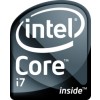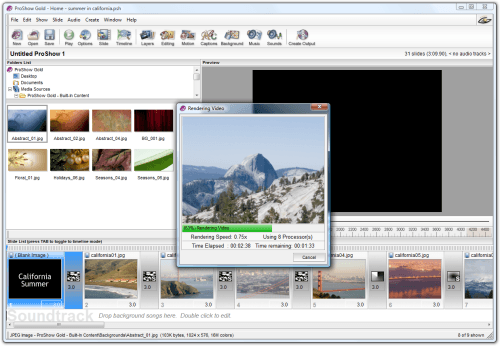- Qualcomm Launches Snapdragon 4 Gen 2 Mobile Platform
- AMD Launches Ryzen PRO 7000 Series Mobile & Desktop Platform
- Intel Launches Sleek Single-Slot Arc Pro A60 Workstation Graphics Card
- NVIDIA Announces Latest Ada Lovelace Additions: GeForce RTX 4060 Ti & RTX 4060
- Maxon Redshift With AMD Radeon GPU Rendering Support Now Available
Intel Core i7 Performance Preview

With Core i7’s launch due in just a few weeks, there’s no better time than right now to take a hard look at its performance, which is what we’re taking care of today. In addition to our usual performance comparisons with last-gen CPUs, we’re also taking an in-depth look at both QPI and HyperThreading performance, and some of our results may surprise you.
Page 8 – Multi-Media: ProShow Gold, Sandra Multi-Media
While TMPGEnc XPress’ purpose is to convert video formats, ProShow from Photodex helps turn your collection of photos into a fantastic looking slide show. I can’t call myself a slide show buff, but this tool is unquestionably definitive. It offers many editing abilities and the ability to export in a variety of formats, including a standard video file, DVD video and even HD video.
Like TMPGEnc and many other video encoders, ProShow can take full advantage of a multi-core processor. It doesn’t support SSE4 however, but hopefully will in the future as it would improve encoding times considerably. Still, when a slide show application handles a multi-core processor effectively, it has to make you wonder why there is such a delay in seeing a wider-range of such applications on the marketplace.

Up to now, we’ve seen increases in performance with Core i7 in every-single test we’ve conducted, but exactly what kind of increases in performance you’ll find seem to be completely random and hard to target. For example, on the last page, we tackled a mobile encode with TMPGEnc Xpress, which had a measly 7% increase in performance, but here, our DVD recode saw much larger increases of ~24%.
Like our TMPGEnc Xpress test though, it’s the HD video encode where the benefits of Core i7 begin to shine. Compare once again our 3.20GHz processors to each other. The Extreme 965 performed the encode job 38.9% faster, while where the 2.66GHz chips are concerned, the 920 saw a boost of 41.0%.
Sandra 2009 Multi-Media
To help show a more “raw” version of the kind of potential Nehalem offers, we ran the Multi-Media test built into Sandra. This test here stresses the CPU’s ability to handle multi-media instructions and data, using both MMX and SSE2/3/4 as the instruction sets of choice. The results are divided by integer, floating point and double precision, three specific numbering formats used commonly in multi-media work.

The domination continues here, with overall performance increases ranging between 15 – 35%.
Support our efforts! With ad revenue at an all-time low for written websites, we're relying more than ever on reader support to help us continue putting so much effort into this type of content. You can support us by becoming a Patron, or by using our Amazon shopping affiliate links listed through our articles. Thanks for your support!






